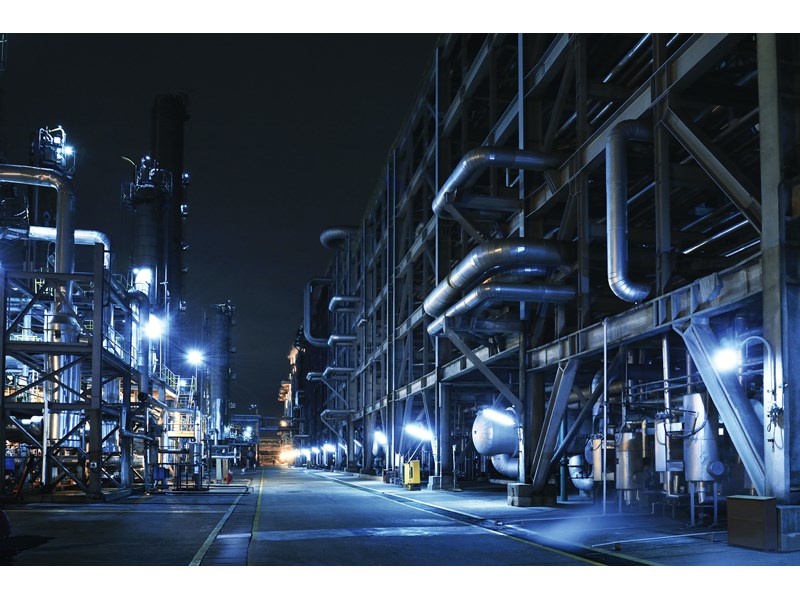Five ways the Russia/Ukraine war is changing oil markets
Refiners set for record profits
4 minute read
Simon Flowers
Chairman, Chief Analyst and author of The Edge

Simon Flowers
Chairman, Chief Analyst and author of The Edge
Simon is our Chief Analyst; he provides thought leadership on the trends and innovations shaping the energy industry.
View Simon Flowers's full profileThe Russia/Ukraine conflict has penetrated deep into global crude and product markets. Producers, traders, shippers, refiners and even consumers are all having to adapt to shifting crude and product flows – and pricing. Our Refining analysts Alan Gelder, Mark Williams and Gerrit Venter guided me through what’s happening and how they think things will play out.
First, very little Russian crude and product volumes have been kept from the market. Oil, like gas and coal, is exempted from official sanctions, though the US, Japan and South Korea have imposed import bans. Many countries and companies are aiming to reduce their dependence on Russian crude and products by the end of 2022.
Around 1.0 million b/d out of total Russian crude exports of 4.6 million b/d is now self-sanctioned. These are mostly Urals barrels destined for European refineries. Volumes will increase to 1.2 million b/d when TotalEnergies’ sources alternative feedstock for its Leuna refinery in Germany, currently served by a dedicated pipeline from Russia. Separately, some of the 1.0 million b/d of diesel produced in Russian refineries and exported (again, mainly headed for European markets) is also self-sanctioned.
Traders are encountering difficulties dealing in Russian volumes, not least credit and logistics – some shipowners won’t allow their vessels to dock in Russian ports. Most of the crude and diesel, though, is still getting to the market, according to our waterborne data. Buyers who have self-sanctioned are still bound to buy the oil under contract, some of which could take months to wind down. Meantime, they will likely reduce contracted offtake to minimum volumes and the rest will need to be sold in the spot market. Spot volumes of Urals crude and Russian diesel are only going to increase over time.
Second, we’ve seen huge swings in crude price differentials in the last five weeks as refiners scramble for alternative feedstock. Urals and Dubai crudes are typically priced at much the same levels in their regional markets, reflecting their similar quality. Brent, the global crude oil price marker, has historically commanded a premium of US$2-3/bbl to both.
Any rise in oil price like that of the last few weeks will tend to widen differentials: Dubai is now trading at a discount of US$10/bbl to Brent while the Urals discount to Brent has blown out to US$30/bbl.
The opening of such a massive differential between Urals and Dubai crudes reflects the huge risk premium the market requires to transact on Russian cargoes.
Third, current market conditions look very bullish for refiners. Self-sanctioning triggered the diversion of Russian diesel exports destined for Europe into other regions. Europe suddenly faced a shortage of diesel in the main ARA (Amsterdam/Rotterdam/Antwerp) market, where storage volumes were already low at the end of winter. Diesel prices spiked upwards to pull volume into the European market and pushed up refining margins. That effect has rippled out across the world, and most refiners should benefit.
Our global composite refining margin is averaging US$15/bbl in March, five times above the annual average for 2021 and among the highest monthly values on record. There are regional variations, but Asia and US refining markets have each experienced margin expansion of a similar scale. High natural gas and carbon emissions costs may take the gloss off European margins. And in all regions, volatile and complicated trading conditions could also dampen profits.
Oil and gas companies’ leverage to margins varies depending on geographical exposure and individual refining assets. Our corporate downstream modelling suggests that at today’s refining margins, the Supermajors could generate more cash flow from refining in Q2 2022 alone than they have had in an average year since 2016. That’s on top of the record upstream cash flow we expect. It’s rare that both upstream and refining margins are at record margins simultaneously.
Fourth, high prices pose a threat to global oil demand and the longer these prices stay high, the bigger the threat. The first signs will appear at the gasoline pump, and it’s clear that motorists everywhere are already feeling the pinch. Diesel demand is less price elastic, with consumption weighted to distribution sectors as well as industry.
Fifth, we don’t expect a return to the free flow of Russian crude and product exports until Ukraine’s independent nation status is resolved.
Given the multiple challenges, it will take a few months for the oil market to find a new equilibrium. It’s already adapting – Urals crude that’s not wanted in Europe will flow to Asia, Middle East crudes and US WTI are increasingly heading to Europe, and Russian diesel exports could find a home in other diesel-deficit markets such as Africa and even Latin America.
The reality, though, is that the global crude and product system has suddenly become more complicated, less efficient and higher cost. This will be reflected in prices.
A new market is emerging for cargoes of Russian origin. The price reporting agencies are already providing quotations for Russian products, with Russian diesel at discounts of more than US$20/tonne.
Lastly, what’s the outlook for oil prices? Brent has been extremely volatile for five weeks trading between US$99/bbl on 23 February, the day before the invasion, up to a high of US$139/bbl intra-day in early March. At today’s price of US$108/bbl, we reckon there’s arguably a ‘Russian premium’ of up to US$20/bbl in Brent. The uncertainty surrounding the war and the potential responses of the various governments is likely to remain for some time.








